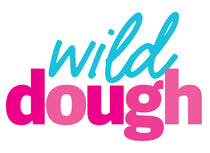52 Dinosaur Fun Facts to Teach with Playdough
Children have an incredible capacity for learning, and they easily absorb new information through play, especially if they are engaged in play on a topic they have particular interest in, like dinosaurs. In this post, we'll explore the benefits of playdough for language development and provide 52 dinosaur fun facts that you can teach your child while engaging in dinosaur playdough activities.
Benefits of using playdough for language development
Playdough can be a powerful tool for developing communication skills in young children. As children manipulate the material, they are engaging in a sensory experience that stimulates their brains and encourages language development. Here are some ways that playdough can help promote language skills:
1. Building Vocabulary
As children play with playdough, they can learn new words related to the dinosaur theme. For example, they might learn words like "stegosaurus," "triceratops," and "pterodactyl." You can encourage your child to repeat the names of the dinosaurs as they create them out of playdough.
2. Describing and Comparing
As children work with playdough in different colours like red, green and brown, they can describe the features of the dinosaurs they are creating. They might talk about the size of the dinosaur, the shape of its body and the texture of its skin. They might also compare the features of different dinosaurs, noting similarities and differences.
3. Following Directions
When you give your child instructions for creating a particular dinosaur out of playdough, you are helping them develop their ability to follow directions. This is an important skill for later academic success.
4. Storytelling
As children create their dinosaurs out of playdough and cutters and stampers, they can also use them to tell stories. You might encourage your child to make up a story about a dinosaur and then act it out using their playdough creations.
Using playdough to explore the world of dinosaurs is a fun and engaging way to promote language development in young children. With the following dinosaur fun facts, you can help your child learn more about these fascinating creatures while having fun with dinosaur playdough.
52 Dinosaur Fun Facts for Dino Lovers
- Some dinosaurs were as small as chickens, while others were as big as a three-story building!
- Dinosaurs lived on Earth millions of years ago, before there were any humans around.
- Dinosaurs came in all shapes and sizes, with all kinds of different features.
- The word "dinosaur" means "terrible lizard" in Greek.
- Some dinosaurs had spikes or horns on their heads to protect themselves.
- Dinosaurs were not the only creatures living on Earth during the time of the dinosaurs - there were also fish, birds, and other animals.
- Paleontologists are scientists who study dinosaurs and other ancient creatures by looking at their fossils.
- Fossils are the preserved remains or traces of ancient animals and plants.
- Some dinosaurs could fly, while others could swim.
- Dinosaurs hatched from eggs, just like birds and reptiles do today.
- The Stegosaurus had a brain the size of a walnut!
- The Brachiosaurus was one of the tallest dinosaurs, with a neck that could stretch up to 30 feet.
- The T-Rex was one of the biggest meat-eating dinosaurs, with teeth as big as bananas.
- The Triceratops had a huge, bony frill on the back of its head.
- The Velociraptor was a speedy predator with sharp claws on its feet.
- The Ankylosaurus had armor plating and a club on the end of its tail.
- The Iguanodon had a spike on its thumb that it could use for defense.
- The Diplodocus was one of the longest dinosaurs, with a neck that could be as long as 90 feet!
- The Compsognathus was one of the smallest dinosaurs, about the size of a chicken.
- The Spinosaurus had a sail-like fin on its back that may have helped it regulate its body temperature.
- The Parasaurolophus had a long, curved crest on its head that scientists think it may have used to communicate.
- The Stegosaurus had plates on its back that it may have used to regulate its body temperature or attract mates.
- The Oviraptor means "egg thief" in Latin, but it probably didn't actually steal eggs.
- The Hadrosaurus had hundreds of teeth that it used to grind up plants.
- The Giganotosaurus was even bigger than the T-Rex!
- The Brontosaurus (now known as Apatosaurus) was one of the largest dinosaurs, with a long neck and tail.
- The Allosaurus had a bite force stronger than that of a T-Rex.
- The Brontosaurus wasn't actually a real dinosaur, but a mix-up of different fossils.
- The Titanosaur was one of the heaviest dinosaurs, weighing as much as 14 elephants.
- The Stegosaurus had a brain the size of a hot dog, but was still able to survive for millions of years!
- The Iguanodon was one of the first dinosaurs ever discovered.
- The Brachiosaurus had nostrils on the top of its head, like a giraffe.
- The Allosaurus may have hunted in packs, like some wolves do today.
- There were both herbivorous (plant-eating) and carnivorous (meat-eating) dinosaurs.
- Stegosaurus had a brain the size of a walnut, while the brain of the T. rex was about the size of a loaf of bread.
- Triceratops had three horns on its head and a frill on its neck that scientists believe was used for display and defense.
- The tallest dinosaur was the Sauroposeidon, which stood over 56 feet tall.
- The Spinosaurus is thought to have been the largest carnivorous dinosaur, even bigger than the T. rex.
- Some dinosaurs, like the Allosaurus, had serrated teeth like steak knives to help them tear meat.
- The first dinosaur fossils were discovered in England in the early 1800s.
- Some scientists believe that dinosaurs may have had feathers for insulation and display.
- The Plateosaurus was one of the first dinosaurs to walk on two legs.
- The Hadrosaurus was the first dinosaur skeleton to be mounted in a museum, in 1868.
- The Triceratops had a beak similar to that of a parrot.
- The Compsognathus was about the size of a chicken and is believed to have been the smallest carnivorous dinosaur.
-
The Parasaurolophus had a long, curved crest on its head that was probably used to make sounds for communication.

- The Stegosaurus had bony plates on its back that were used for defense and to regulate its body temperature.
- The Allosaurus is believed to have been a scavenger as well as a predator.
- Scientists believe that a massive asteroid impact caused the extinction of the dinosaurs around 66 million years ago.
- Dinosaurs lived during the Mesozoic Era, which is also known as the Age of Reptiles.
- The biggest dinosaur that ever lived was the Argentinosaurus. It was about 100 feet long and weighed as much as 10 elephants!
- The oldest known dinosaur is the Eoraptor, which lived about 231 million years ago.
Learning about dinosaurs can be a fun and exciting adventure for kids. From the towering Brachiosaurus to the speedy Velociraptor, these prehistoric creatures capture our imaginations and inspire us to learn more about the world around us. By engaging in playdough activities, children can not only have fun, but also develop important communication and language skills. We hope that our list of 52 fun dinosaur facts has sparked your child's curiosity and love for learning.



